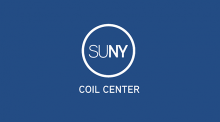This report has been published by the Collaborative Online International Learning (COIL) Institute.
This report analyzes the Collaborative Online International Learning (COIL) Institute for Globally Networked Learning in the Humanities – a project that involved 21 United States institutions and 25 international partner institutions from 19 countries, who participated in 24 successful COIL courses. Each COIL Institute fellow made a 2-year commitment to take part in the Institute’s customized social networking platform, discipline-specific workshops, a follow-up course that built upon the globally networked learning ideas from the workshops, teaching/supporting a globally networked course, maintain observation logs, and attending the capstone event.
The author of this report found that the average class size was relatively small (16 students). The author also found that many American institutions sought international partner institutions that offer instructions in English to facilitate collaboration (thus, all but two courses took place in English). While language issues were minimal, diverging cultural backgrounds did complicate communications, and it was noted that non-English speakers may have felt more insecure as compared to their U.S. peers which may have affected their level of engagement.
Most courses used a blended format, combining in-person classes and online work, using both asynchronous and synchronous technologies. Fellows primarily relied on cloud-based media tools and Learning Management Systems (LMS) available at their institutions, as well as e-mail, to communicate, with different tools being helpful in conducting different types of tasks. Fellows also emphasized the importance of being flexible with these courses as faculty may have little control over these tools as well as technical difficulties.
The report also found that teachers are important in encouraging intercultural learning and that financial, administrative, pedagogical and technical support from the institution is necessary. One factor that led to a high dropout rate was the difference in academic culture compared to U.S. institutions; nearly half the feedback from students was positive, expressing enthusiasm, while negative comments were predominantly related to logistical issues.
The report concludes that while COIL courses are innovative programs, they may be difficult to integrate into university curricula. Moreover, it may be challenging to establish long-term relationships across international institutions due to administrative diversity within institutions. The report also discusses the difficulty in encouraging institutions to invest in such programs and proving their worth; finally, the report highlights the value of cross-cultural perspectives and recommendations for improving future iterations of such courses.
For more, see Guth, S. (2013). The COIL Institute for Globally Networked Learning in the Humanities: Final Report.
